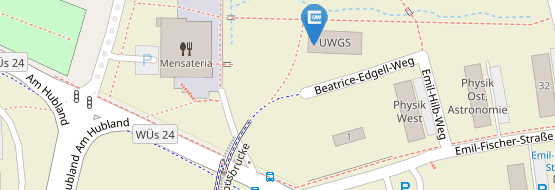Neuroscience
Section Speakers
- Grit Hein
- Matthias Gamer
- Carmen Villmann
Neuroscience is one of the fastest developing areas in the life sciences. Beyond the function of nerve cells and synapses, the following four questions are of particular interest
- How do neurons interact within a complex system?
- How can behavior and other higher brain functions be explained on a molecular and cellular level?
- How do diseases of the nervous system develop?
- How does the nervous system interact with other organs and organ systems?
The answers will stem from broad interdisciplinary expertise in system physiology, behavioral neuroscience, molecular biology, molecular structure and function, organic and pharmaceutical chemistry and bio-informatics. New complex research topics include: (1) the development of a common language for theoretical research approaches on neuronal networks in the area of physics and informatics, in close interaction with classical neurobiological approaches i.e. the analysis of neuronal function in complex structures of the nervous system; (2) the consequent development of intelligent control systems in informatics, based on the neurobiological analysis of neuronal/cognitive processes; (3) the development of new drugs, based both on knowledge on disease processes and on structures of identified key molecules, e.g. neurotrophic factors, intracellular signal molecules, and ion channels; (4) the development of new concepts to characterize the neurobiological principles underlying cognition, emotion, and behavior. Three DFG-Collaborative Research Centers, one Clinical Research Group and two Research Training Groups already successfully contribute to the questions outlined above.
If you want to learn more about research going on in this area in Würzburg, there are several ways to proceed
A. Have a look at the collaborative research programs and research training groups, mostly supported by the DFG:
- CRC TRR 58 Fear, Anxiety, Anxiety Disorders
-
CRC TRR 295: Retuning dynamic motor network disorders using neuromodulation
B. Check the profiles of the principal investigators associated with this section
C. Visit the homepages of the individual research centers, institutes and clinics (not everything is available in English on that level)


